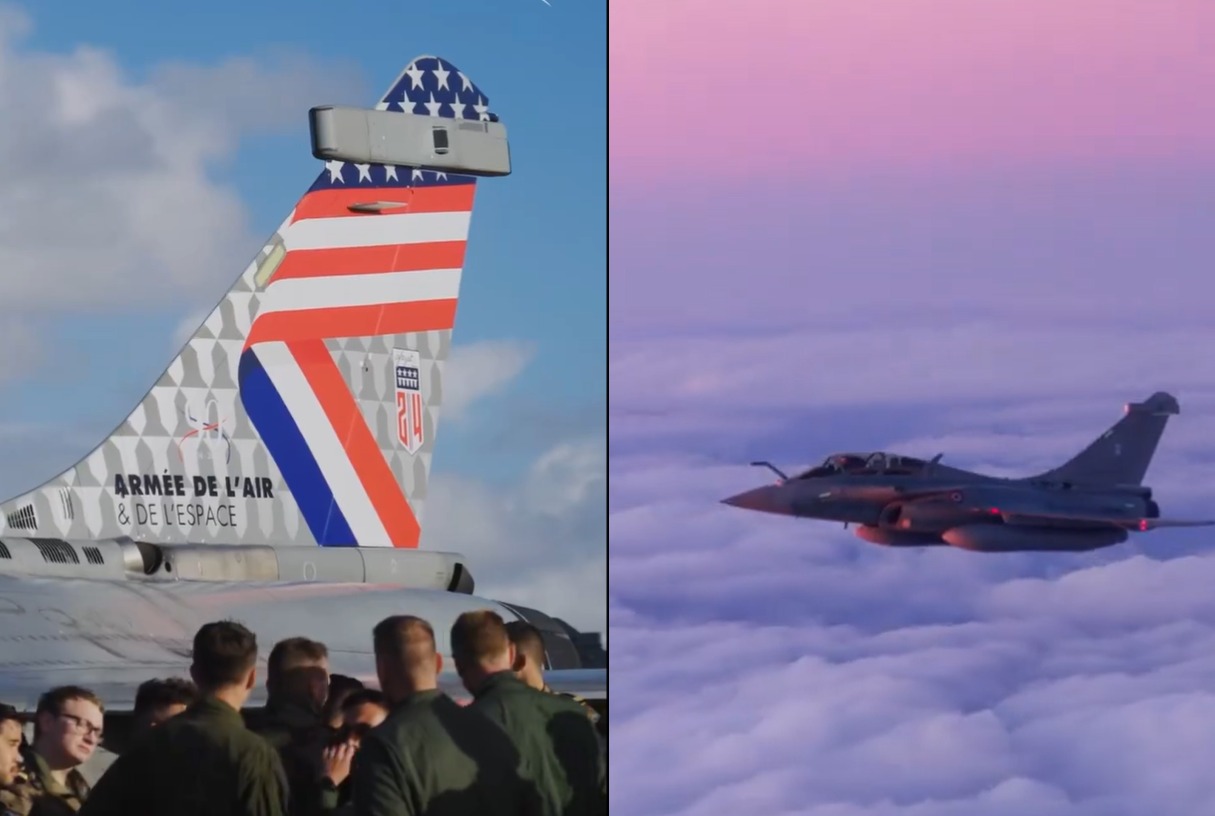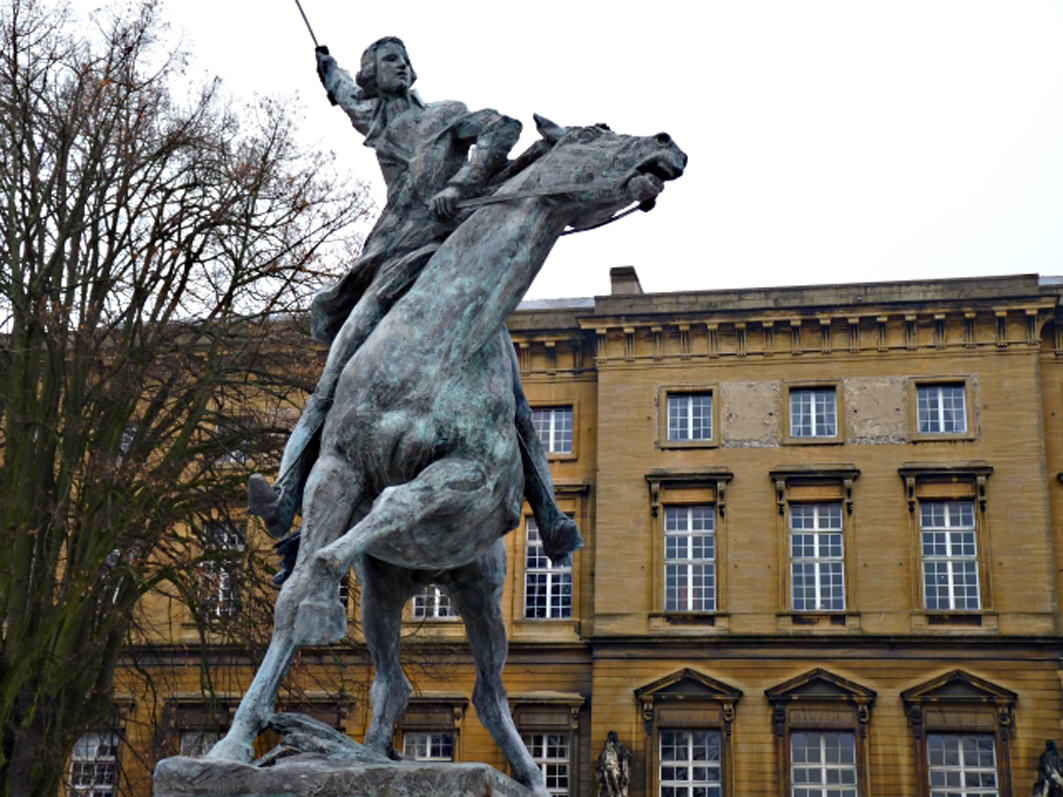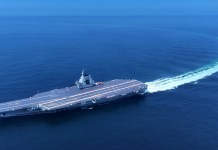French Rafale fighter jets soared through the skies over Yorktown, Washington, D.C., and Williamsburg between October 17 and 21.
The Rafales celebrated the bicentennial of Marquis de Lafayette’s return to the United States in 1824, commemorating the French nobleman’s instrumental role in aiding the American Revolution.
Two Dassault Rafale fighter jets, accompanied by an Airbus A330 MRTT tanker from the French Air Force, participated in the event, marking the 200th anniversary of Lafayette’s farewell tour of America.
The Rafales performed alongside a Lockheed Martin F-22 Raptor from Langley Air Force Base, symbolizing the enduring partnership between the French and American military forces.
Lafayette, a heroic figure in the American War of Independence, volunteered to join the Continental Army under General George Washington, significantly contributing to the fight against British colonial rule.
https://twitter.com/Armee_de_lair/status/1847590409276407834
In 1824 and 1825, Lafayette commenced a historic tour across the newly formed United States, visiting all 24 states and receiving a warm welcome in each city, marked by processions, banquets, and public receptions.
The jets involved in the flyover belong to the Lafayette Squadron, a distinguished unit with a storied history dating back to World War I when American pilots trained alongside their French counterparts.
This event serves as a crucial reminder of the deep-rooted ties between the two nations, forged through shared struggles for liberty and independence.
Laurent Bili, the French Ambassador to the United States, emphasized the significance of the location, stating, “Yorktown was a turning point during the Revolutionary War, and we are proud of the contribution of Frenchmen like Lafayette, Rochambeau, and de Grasse.”

He extended his gratitude to organizations such as the American Friends of Lafayette, the American Revolution Museum at Yorktown, and the Daughters of the American Revolution (DAR) for their efforts in preserving Lafayette’s legacy.
In recent years, the Rafale, recognized as the most advanced fighter jet in France’s arsenal, has gained international attention for its remarkable export success.
As it soared over historic sites, the flyover not only celebrated Lafayette’s contributions but also reinforced the continued collaboration between the French and American military, honoring a shared history that dates back over two centuries.
The French Hero Who Shaped Two Revolutions
Gilbert du Motier, Marquis de Lafayette, was born on September 6, 1757, and is widely recognized as a French aristocrat who played a key role in both the American and French revolutions.
Often referred to simply as Lafayette, he remains a symbol of liberty and courage for his commitment to the ideals of freedom and democracy. His extraordinary military service and political influence earned him a lasting legacy in both France and the United States.
Lafayette’s rise to prominence began during the American Revolutionary War, where, at the young age of 19, he volunteered to serve as a major general in the Continental Army under General George Washington.

Despite being wounded during the Battle of Brandywine in 1777, Lafayette demonstrated strong leadership by organizing a successful retreat, which protected the Continental Army from significant losses.

His tactical skill at the Battle of Rhode Island further cemented his status as a key military figure in the war. Midway through the revolution, Lafayette returned to France on a diplomatic mission to secure increased French support for the American fight against Britain.
His efforts bore fruit as France stepped up its military and financial backing for the fledgling United States. Upon his return to America, Lafayette played a crucial role in the final chapter of the war by helping block British troops under the command of General Cornwallis at Yorktown.
His tactical maneuvering allowed the armies of Washington, as well as the French forces led by General Rochambeau and Admirals de Grasse and de Latouche Tréville, to prepare for the decisive Battle of Yorktown. The victory there in 1781 effectively ended the Revolutionary War and secured American independence.
Lafayette’s contributions to the American Revolution were not only military but also ideological. He became a crucial link between the American and French revolutions, advocating for the spread of constitutional principles.
His experience in America inspired him to promote similar values during the French Revolution, during which he took on leadership roles, including commander of the Garde Nationale.
Lafayette’s Farewell Tour In The United States
In the early 1820s, as the United States consolidated its political identity and navigated a post-war landscape, the nation found itself at a significant crossroads.
The successful negotiation of the Louisiana Purchase by Thomas Jefferson signified America’s westward ambitions, while the War of 1812 against the United Kingdom highlighted the need for a robust focus on homeland security.
Against this backdrop, the era was defined by the Monroe Doctrine, which sought to establish a sphere of influence and security for the United States amidst shifting global power dynamics.
Meanwhile, in France, the repercussions of the French Revolution were reshaping society. The Bourbon Restoration had stifled liberal ideals, and many, including the Marquis de Lafayette, found themselves yearning for the revolutionary fervor that once inspired change.
As the last surviving Major General of the American Revolutionary War, Lafayette received an invitation from President James Monroe and Congress to embark on a grand tour of the United States—a journey that would become known as his Farewell Tour.

Between August 1824 and September 1825, Lafayette traveled through all 24 states of the Union, accompanied by his secretary, Auguste Levasseur.
The tour celebrated the bond between the United States and France and revived liberal ideals at a time when such thoughts were diminishing in his homeland.
Lafayette’s enthusiastic reception across the nation was a testament to Americans’ deep gratitude toward the hero who had aided their quest for independence nearly five decades earlier.
One of the notable episodes of the tour occurred at the Adams Female Academy in Derry, New Hampshire. A letter from that time captures the electrifying atmosphere surrounding Lafayette’s visit.
“Ladies from the village now came in, hoping to share our chance of seeing the hero,” it read. When Lafayette entered the classroom, the transformation was immediate: “Every eye glistened, but it was with enthusiasm; every heart swelled with intense interest.”
Lafayette’s Farewell Tour was further characterized by an incredible pace, with more than 170 stops in New England alone. He reconnected with individuals from the Revolutionary War, such as James Armistead Lafayette, the former slave who had served as a double agent during the Siege of Yorktown.
These encounters reinforced the emotional ties between Lafayette and the American people as they shared stories of sacrifice and victory.
While the tour had scheduled commitments in major cities like Boston and New York, Lafayette often found himself making unscheduled stops to accommodate well-wishers.
The logistical challenges of traversing poorly maintained roads showed his effort to connect with as many people as possible, revealing a genuine commitment to honoring the bond between France and the United States.
- Contact the author at ashishmichel(at)gmail.com
- Follow EurAsian Times on Google News




